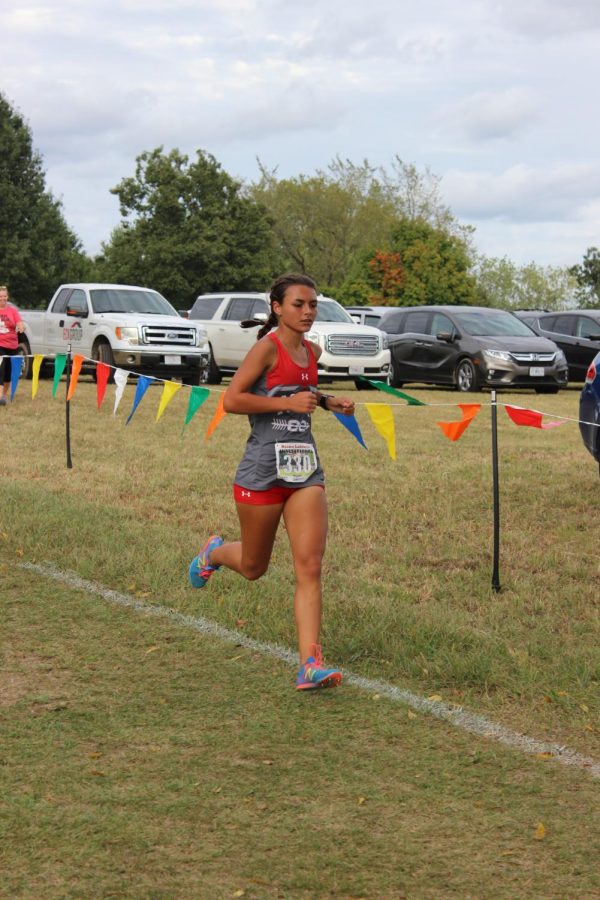Ready To Win
Athletes use off-season training to help them prepare for competition
Aubrey Kopp shows her running skills at a cross country meet.
March 2, 2022
Off-season offers athletes the time to improve their skills.
“Off-season is something that was created because Nixa Schools wants our athletes to be able to perform at the highest level possible and to stay healthy when they compete,” Jon Gold, the off-season and weights coach, said. “The number one thing that improves performance and prevents injuries is getting stronger, and training with weights is the most efficient way to get stronger.”
Athletes at Nixa work almost each school day to better themselves.
“Training athletes is all about working the foundational movement patterns that humans can perform: squatting, hinging, pushing, pulling and loaded carries,” Gold said. “We try to strengthen these patterns as efficiently as we can. We focus on compound barbell movements such as squats, cleans, deadlifts, bench press, military press and various pulling movements. Additionally, we work on prehabilitation movements like one-legged squats and lunge variations, various shoulder strengthening exercises and bodyweight movements.
“Another primary concern is strengthening the midsection, or ‘core,’ so that the force we can produce is transferred through the body to the ball or opponent.”
Every student is welcome to join off-season.
“The Iron Eagle off-season program was created to provide all Nixa athletes an opportunity to enhance their athletic potential,” Annie Zimmerman, the NHS head volleyball coach and physical education teacher, said.
An athlete’s commitment in off-season is very different from the in-season responsibility.
“In-season athletes spend an average of two or three hours per day, five to seven days per week practicing or performing while they are in season,” Zimmerman said. “The off-season time commitment is much less — about one or two hours for two to three days a week. Off-season workouts are designed to produce gains, while in-season training and workouts are designed to maintain.”
The range of workouts varies for each athlete and sport.
“The biggest difference between off-season and in-season is managing the overall level of stress on the body,” Gold said. “The body has to be able to recover from the stress put on it, and it does not differentiate between lifting, playing a game, studying for a test or breaking up with a girlfriend or boyfriend. When an athlete is in-season, the amount of lifting we do and the weights used have to be lowered to account for the additional stress of games and practices. In the off-season, games are not there, so we can push the volume and intensity of the lifting much harder.”
Joining off-season changes the way athletes approach their sports.
“Off-season has changed my outlook on my sport because it gives us more time to work on our mobility and the little things that will help us during the season,” sophomore Faith Chepkondol said.
Although some athletes may be unsure about joining off-season, there are many upsides to the program.
“The advice I would give an athlete when joining off-season is you won’t regret doing it, you will meet so many new friends in your sport,” Chepkondol said.







